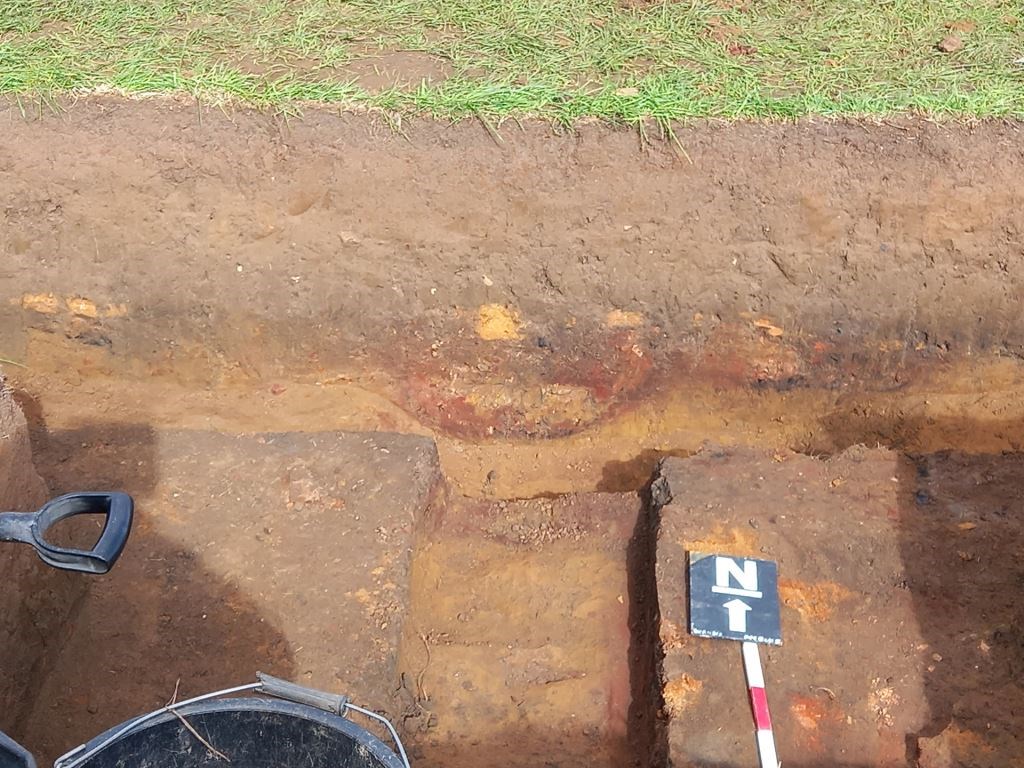Roman Iron Working, Seend, Wiltshire

Excavations at Seend in Wiltshire have confirmed the presence of Roman iron working. Wiltshire Archaeology Field Group targeted magnetic anomalies located by Archaeological Surveys and Mike McQueen revealing an ore roasting pit of Roman date and 17th century brick kiln. Recent work in 2023 has also located evidence of tile and pottery production also likely to be of 17th century date. Additional measurement of magnetic susceptibility was carried out in order to assist the interpretation of features and layers in the site.
The iron deposits at Seend are in the form of brown hematite found within a sandstone, the roasting probably served to dry the ore as well as breaking it into smaller pieces and remove some impurities. Both roasted and unroasted ore were located during the excavation work, and in order to assess the type of material present within the archaeological layers, magnetic susceptibility sampling was employed. The roasting process produces ferrimagnetic maghemite and magnetite which are significantly more magnetic than the unroasted brown hematite ore. Measuring small samples using the Bartington MS2 meter with MS2B sensor produces mass specific magnetic susceptibility readings that can be used to clearly determine whether an ore sample is roasted or unroasted, which may not be clear from visual inspection alone. The measurements can be done rapidly and assist in the interpretation of archaeological contexts and magnetic anomalies located by magnetometry survey.
Mass specific magnetic susceptibility was also employed in the measurement of vertical columns sampled at 10cm intervals. The results assist the interpretation of the various subsurface contexts as well as proving information on pedogenesis (soil formation). Visual and textural information from archaeological layers is often the basis of interpretation but in some cases magnetic measurement can provide useful supplementary information. At Seend, the roasting pit contained a layer of what visually looked like pure charcoal at its base but samples demonstrated that this contained very magnetic material that presumably accumulated through the roasting process. A number of questions arise as to whether the layer would be extracted for inclusion in a smelting furnace, whether it is very fine material that accumulates over time at the base of the pit, etc.